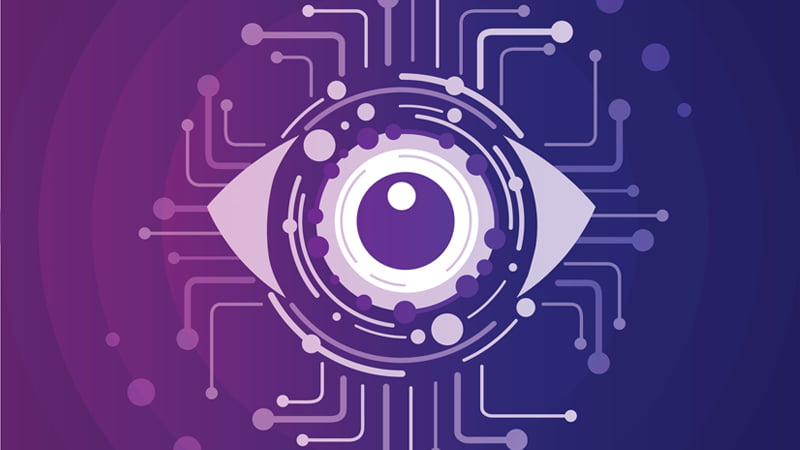How do Computer Vision and Image Processing Work?

Computer Vision and Image Processing are one of the most popular fields of Artificial Intelligence. Many people think that they are in the same field.
But that’s not entirely true.
Computer Vision is basically used to read and analyze the information present in an image. On the other hand, Image Processing enhances its quality by applying different processes. To differentiate these terms, analyzing how they work is important.
That’s what we will discuss in this blog. Let’s start with discussing Computer Vision.
Computer Vision
Computer vision is also known as the eyes of artificial intelligence (AI). It is the interdisciplinary field of study that authorizes computers to solve, understand, and process visual information from the physical world. In addition, it also involves a combination of computer science, mathematics, and cognitive psychology to enable machines to “see.” It enables computers and other machines to analyze images and videos as humans do by using their minds.
Image Acquisition and Representation
The first step in computer vision is image obtainment, where digital devices like cameras capture visual data from the environment. The images obtained are then converted into digital representations using pixel values that use them as grayscale images. A single value denotes each pixel’s brightness and color contrast in a grayscale image. For color images, pixels are defined using multiple values corresponding to the intensity of each primary color (i.e., red, green, blue).
Pre-processing and Feature Extraction
Raw images often undergo pre-processing before any meaningful analysis can take place to enhance quality and reduce noise. Operations like noise reduction, image resizing and colour normalization take place to make subsequent operations more efficient.
Moreover, a feature extraction function is performed to identify important patterns or characteristics within the images. Depending on the specific application, features could be edges, corners, textures, shapes or even more complex visual patterns. This step simplifies the complexity of the image data and facilitates consecutive analysis.
Object Detection and Recognition
One of the fundamental tasks in computer vision is object detection and recognition. This involves identifying and localizing specific objects or instances within an image. Modern computer vision systems deploy advanced algorithms, such as convolutional neural networks (CNNs), to perform this task. CNNs have demonstrated remarkable performance in detecting and recognizing objects. It gives access to the computer to development of real-world applications like autonomous vehicles and smart surveillance systems.
Image Processing
Image processing works to enhance and Transform the visual information of an image with the help of a computer. While computer vision focuses on higher-level tasks like recognizing objects, image processing is concerned with low-level manipulation and image enhancement. It deals with techniques that improve image quality, extract specific features and transform images to make them more suitable for further analysis.

Image Filtering and Enhancement
Image filtering includes applying various filters to an image to highlight or suppress specific features. For a moment, edge detection filters make the boundaries between objects noticeable, while blurring filters smooth out noise from images. Image enhancement methods aim to enhance the visual quality of an image. In addition, making it more suitable for human interpretation or computer analysis.
Image Transformation
Image transformation techniques have the ability to change the geometric properties of an image. Common transformations contain rotation, scaling and translation. One can use these transformations to adjust image orientation and resize or align images with a particular reference frame.
Image Restoration
Image restoration is the process of recovering the uncorrupted version of an image from its degraded form. This is especially beneficial in situations where images are impacted by noise, blurriness or other imperfections.
The Synergy of Computer Vision and Image Processing
Computer vision and image processing are highly complementary fields, and their combination allows for powerful and robust visual analysis. Computer vision techniques use the pre-processed and enhanced images generated by image processing algorithms. They also enable more accurate and efficient object detection, recognition and tracking of objects within an image.
For example, in an autonomous vehicle, image processing techniques can remove motion blur and correct distortion in real-time camera feeds. This process improves the quality of the input data. Subsequently, computer vision algorithms can detect vehicles, traffic signs and lane markings. It allows vehicles to navigate safely and efficiently while driving.
Conclusion
Computer Vision and Image Processing important terms of Artifiical Intelligence. Although people think they are the same things, there remain a clear difference between them. They are usd to enhance the images and extract and analyze information from them.
In the information that we have dicsussed above, the working procedures of Computer Vision and Image Processing is discussed. Understanding how they work will help you know the difference between them.






